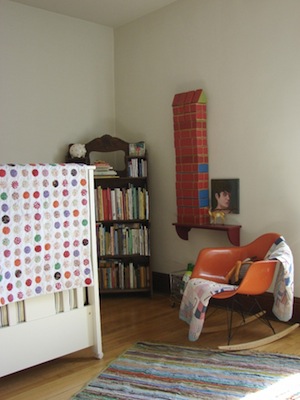Disclosure: This post may contain affiliate links, meaning we get a commission if you decide to make a purchase through our links, at no cost to you. Please read our disclosure for more info.
The urge to nest may be a stereotype attributed to pregnant women, but it’s not without a sound basis in reality. Luckily, moms-to-be can tackle the tasks associated with turning an average room in the home into a nursery as a way to assuage their maternal instinct to feather a fine nest for the impending arrival of an infant. But aside from providing for comfort and style through the furnishings and décor, there are several safety considerations that must be addressed in order to ensure the health of both mother and child. Here are just a few issues that you’ll certainly want to keep in mind when you’re planning your newborn’s nursery.
The first thing to look into is the preliminary aspects of the room design, which is to say the paint and flooring. You might not think twice about picking up a couple cans of paint in pink, blue, or other baby-friendly pastels, and one type of carpeting might seem to be as good as the next. But there are a couple of problems with these mass-manufactured products where your baby’s health and safety are concerned. Did you know that most modern paint products contain volatile organic compounds (VOCs)? Probably not – most people don’t. So you are probably also unaware that these harmful toxins can hang around in the air for years after you paint a room, and certainly long after the smell has dissipated. While they may cause only headaches and nausea, VOCs have also been linked to serious medical issues like cancer and nervous system disorders. If this prospect concerns you, opt instead for non-VOC paint; you might be surprised by the variety presented by this niche market.
As for carpeting, the main concern for many parents centers on potential allergens. Babies tend to be more sensitive to environmental allergens than older children or adults, and synthetic carpeting not only undergoes chemical processing that your child will come into contact with every time you set him on the floor, but they also tend to trap and hold allergens like dust, pet dander, pollen, and so on, releasing them into the air every time you vacuum or even take a step. In order to avoid the possibility of filling your child’s space with such allergens, consider other flooring options like hardwood, tile, or even organic-fiber carpets (cotton, wool, etc.) that are chemical-free and allergen resistant.
But what about furniture and décor? Can these items be dangerous? They certainly can, which is why you should do your homework before you buy. First and foremost, you must read consumer reports in order to compare safety ratings for products like cribs, changing tables, and so on. From there you may want to look for products that use environmentally-friendly (read: toxin-free) paints, varnishes, and adhesives. And purchasing organic linens for bedding, curtains, and clothing isn’t a bad idea either. You can even find rockers, chairs, and sectional sofas with these features (what is a sectional sofa good for if you can’t find one that is safe for your child?).
And you’ll definitely want to finish the room with accessories and toys that put safety first, which means finding pieces that are designed to be grabbed and put in the mouth of infants and toddlers. Look for toxin-free products that feature no small parts that could be swallowed by your child. Keeping your newborn safe and healthy is your primary concern as a parent, so make sure to decorate the nursery in a way that is in line with these ideals.

